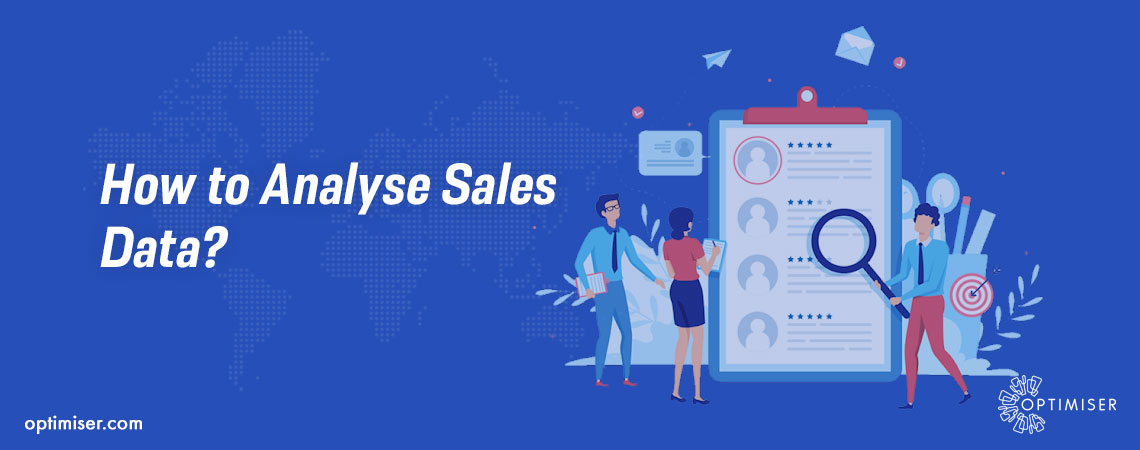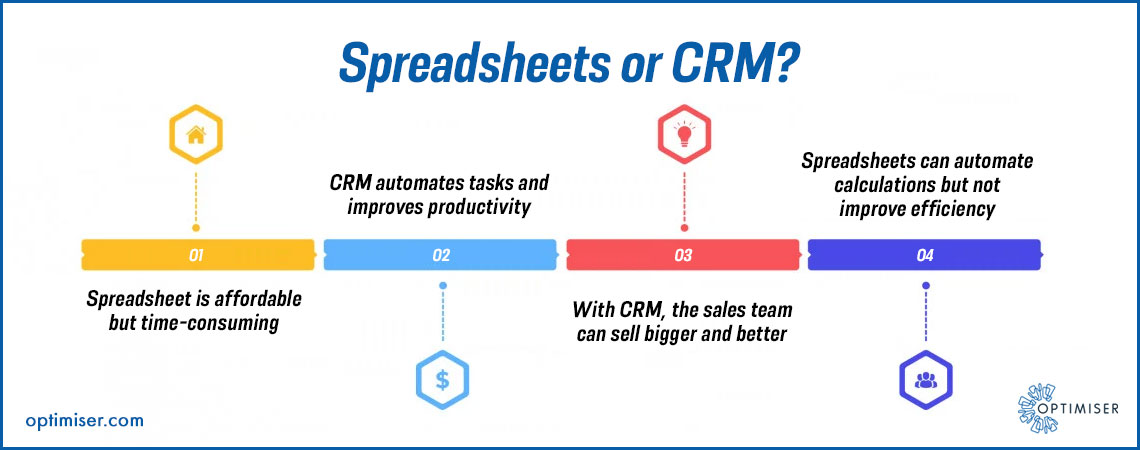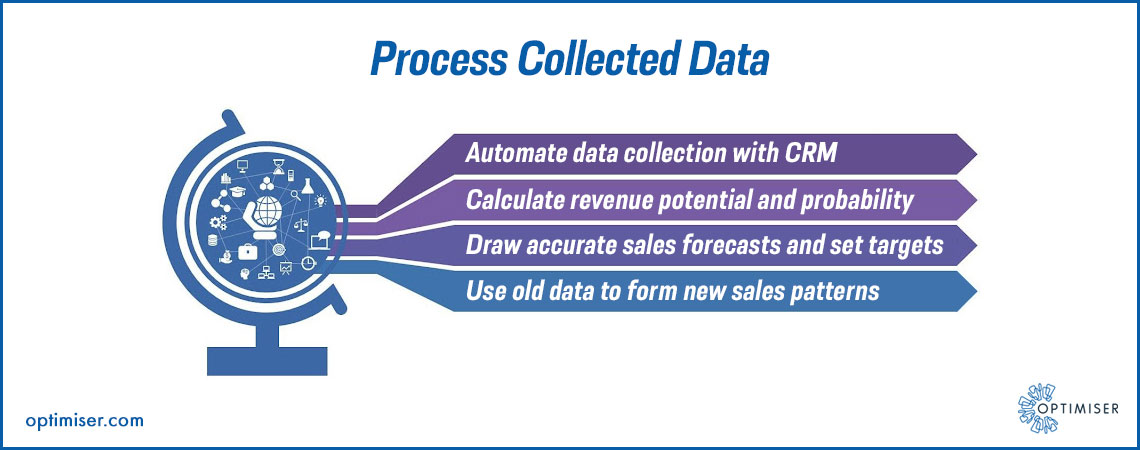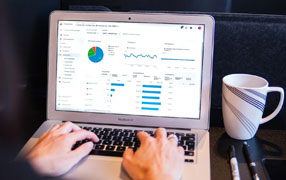
How Businesses Should Analyse Sales Data?
Sales data analysis is incredibly important for every organisation. From sales forecasting to analysing how much the organisation will grow, this data plays a major role in making important business decisions.
All the measurable characteristics of sales can be defined as sales data. It includes numerous elements, each having a significant role.
With the advancement of technology, team leaders do not have to collect data from different places. They can depend upon software like CRM for the Sales team to do it for them. It allows them to focus on productivity as the depth analysis of the data is also done by the CRM. They can focus more on selling rather than administrative tasks and grow bigger.
Spreadsheet Vs. CRM
Gathering the sales data can be accomplished through the means of spreadsheets. It is the most affordable solution for many small businesses that are not planning to extend to CRM. However, it is extremely time-consuming. It lacks automation tools and a specialised structure that will allow it to tailor to your business's individual needs. Since spreadsheets are free, their biggest limitation is that the sales team will manually enter the data. It is one of the most time-consuming activities that will take up to 50 per cent of the selling time. While certain functions like calculations can be automated, specialists will be wasting their precious time away on administrative tasks instead.

What can a CRM do for the Sales Team?
A CRM is suggested to businesses to manage data and conduct sales activities. Given several CRM in the industry, one can easily find the one that suits their budget and fulfils demands of business operations. Ensure that your staff is trained before implementation; otherwise, it will consume more time than it will save.
One excellent example is the Optimiser CRM that is one of the best CRM for sales management. It captures data automatically and saves the relevant information, and no information has to be added manually. It is all stored in a single platform, allowing you to navigate through the system flexibly and reduce the chances of human error.
Once a CRM system has detected a sales pattern that is effective and efficient, it will inform you about it. The sales team can use this pattern to enhance their sales strategy and earn more. The more information captured within the CRM, the more precise and accurate your sales forecast data will be.
Processing the Collected Data
Once you have the collection of data underway, how will you analyse it?
To estimate the overall revenue potential, the sales team can assess the chance of closing a deal. At the same time, it goes through the sales pipeline.
Drawing out a comparison with previous failed and successful deals, it can be inferred why and when they have lost deals and what can be done to plug this. You can draw an estimate to close the new deal in every section of your pipeline based on the collected data.
The manager will have an estimated deal price for every lead. It allows them to estimate the revenue that can be expected as well as the customer acquisition cost. Accordingly, they can predict the chances of every lead's movement through the pipeline. Optimiser CRM provides a B2b Sales Toolkit for the collection of information and analysis. One can automate these tedious tasks and focus on collating high-value prospects.

Sales Forecasting
- Sales forecasting is not something that only the sales department focuses upon. Every department within the organisation focuses on this aspect as it decides the revenue that will be brought in the following months and budget allocation. Sales forecasting allows a conscious allocation of resources to every department to ensure that they have access to the materials they need without causing a scarcity in one sector and surplus in others.
- Sales forecasts are not synonymous with sales potential. The potential does not take into account the context. The sales potential will be similar to the forecast, given that nothing changes whatsoever in the current trajectory of the selling activities. However, moving away from the numbers, it is well-known that the customer demands fluctuate from time to time. Therefore, the sales activities will not always be similar for every season. Another reason for sales activities changing might be a rival introducing a new suite of tools or a crisis hitting the financial markets.
- Historical patterns can be used to scrutinise the future of the sales potential within an organisation, but by no means will the result be similar.
- Not to miss, old patterns that worked brilliantly for the company will become outdated as well. There is going to be no significance in sticking with them if your company begins to grow. It will rebound the organisation towards stagnation. Even the best CRM for Enterprise Sales for small businesses will require you to adapt to the new patterns as the system does. New sales strategies and instruments have to be used to innovate the sales activities.
- Even then, you need not throw away the old data. This information can be used to reform strategies if any old trend comes into place or evolves into a new one. These statistics can be used for data analysis, but newer factors have to be considered while moving forward.
Summary
Sales data analysis is also used for deciding targets for the next financial cycle. This data is never stagnant as it gives a deep insight into what was and what can be expected.

30 days free trial. No credit card required
 One powerful platform
One powerful platform
 Simple to use
Simple to use
 Comprehensive
Comprehensive



